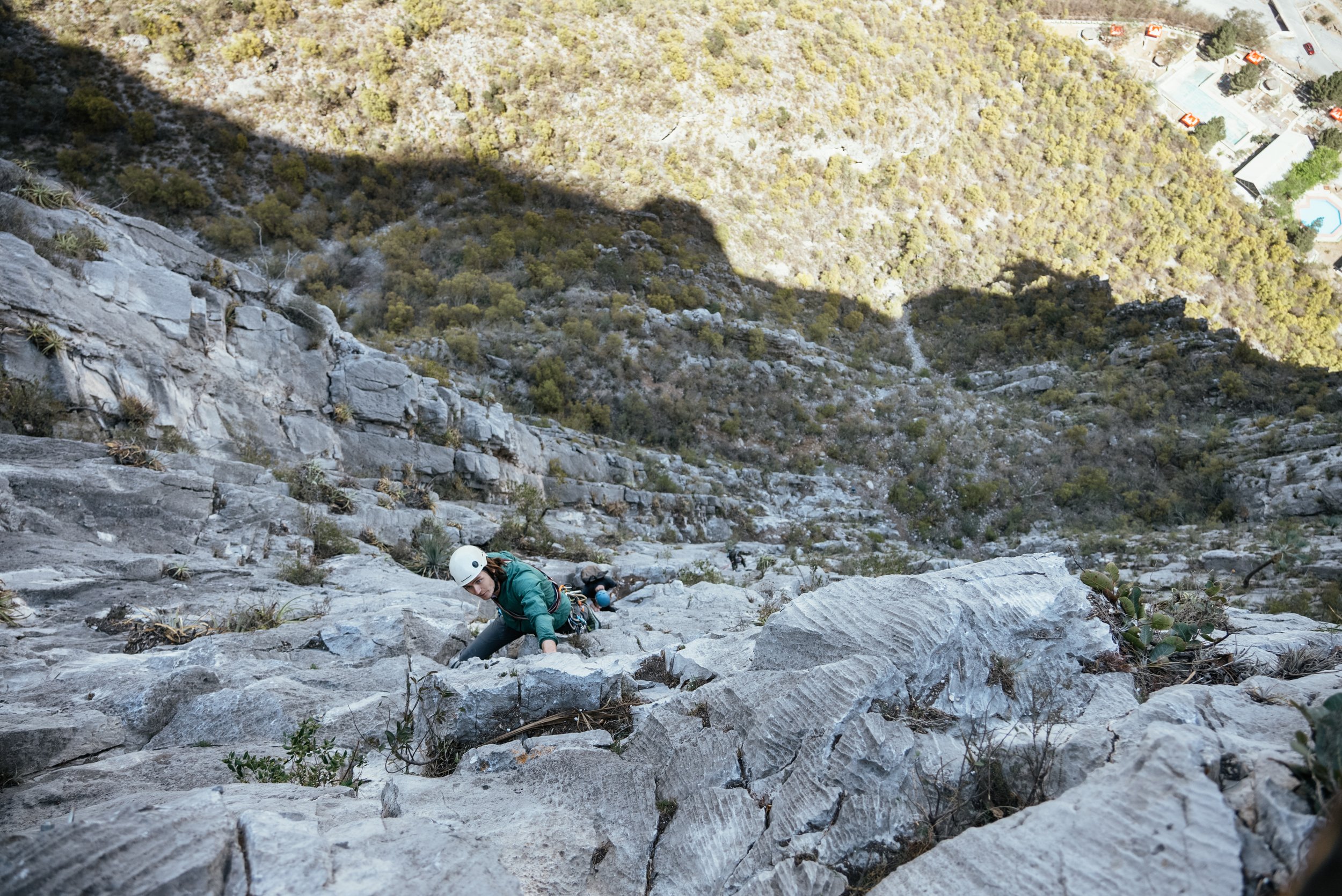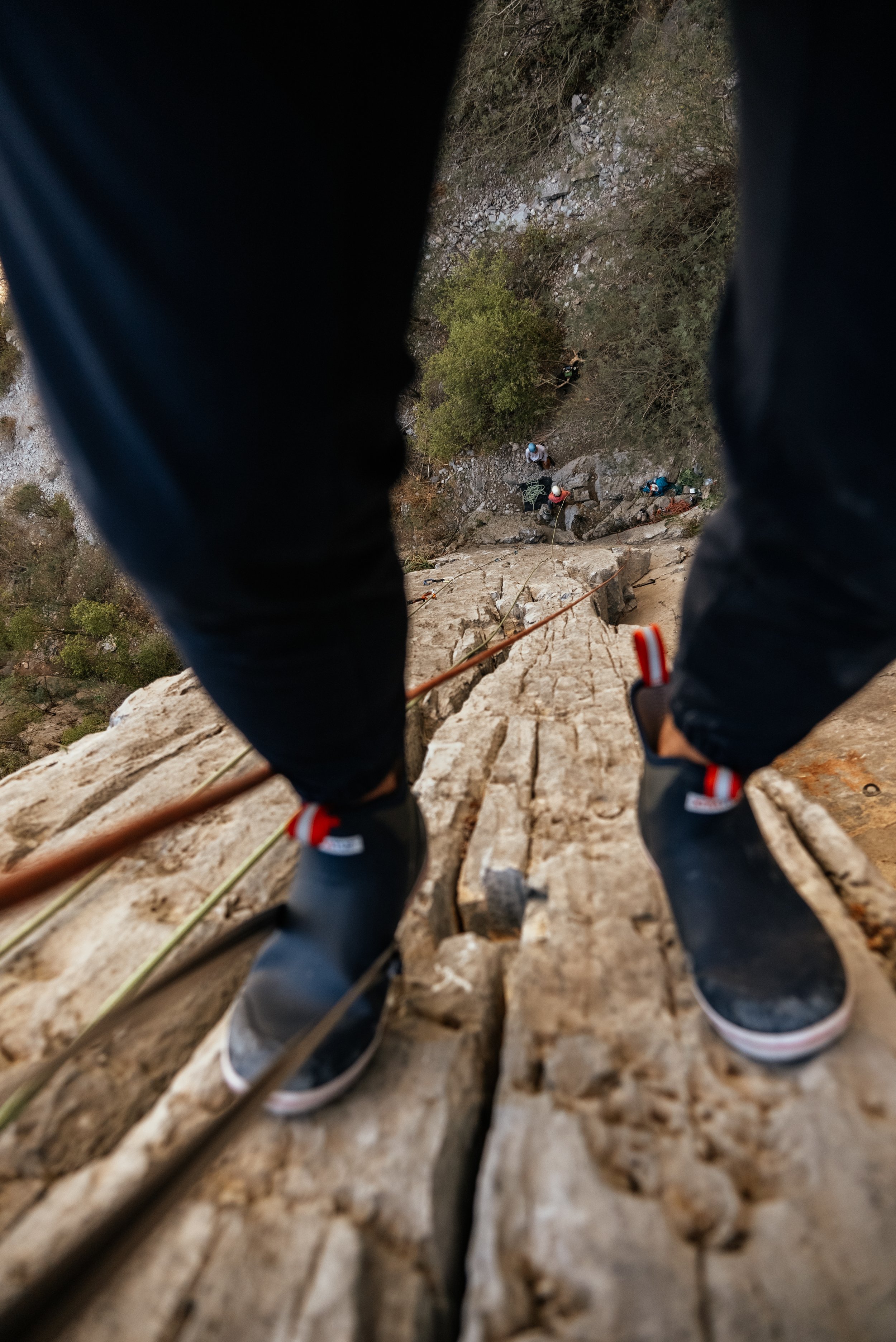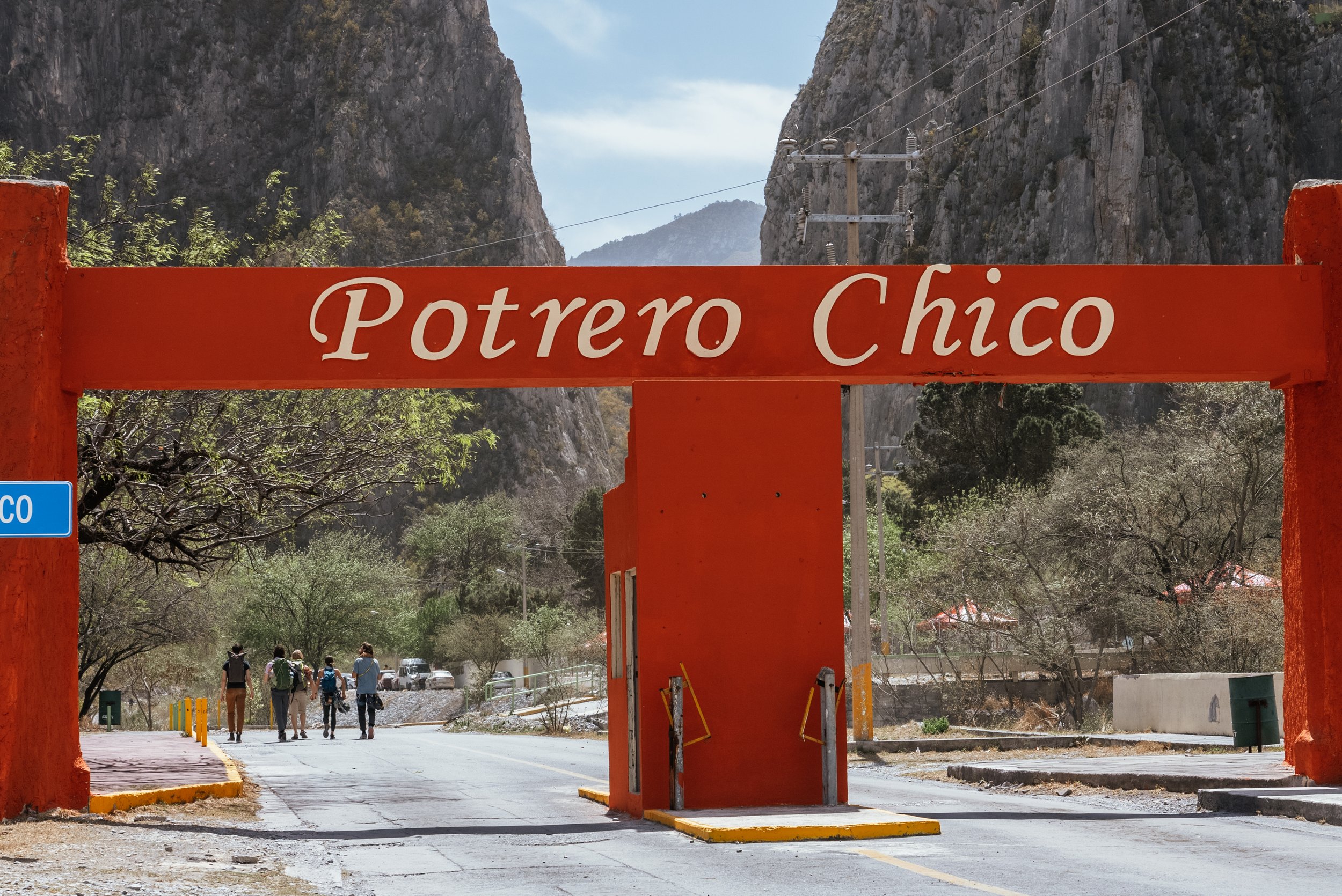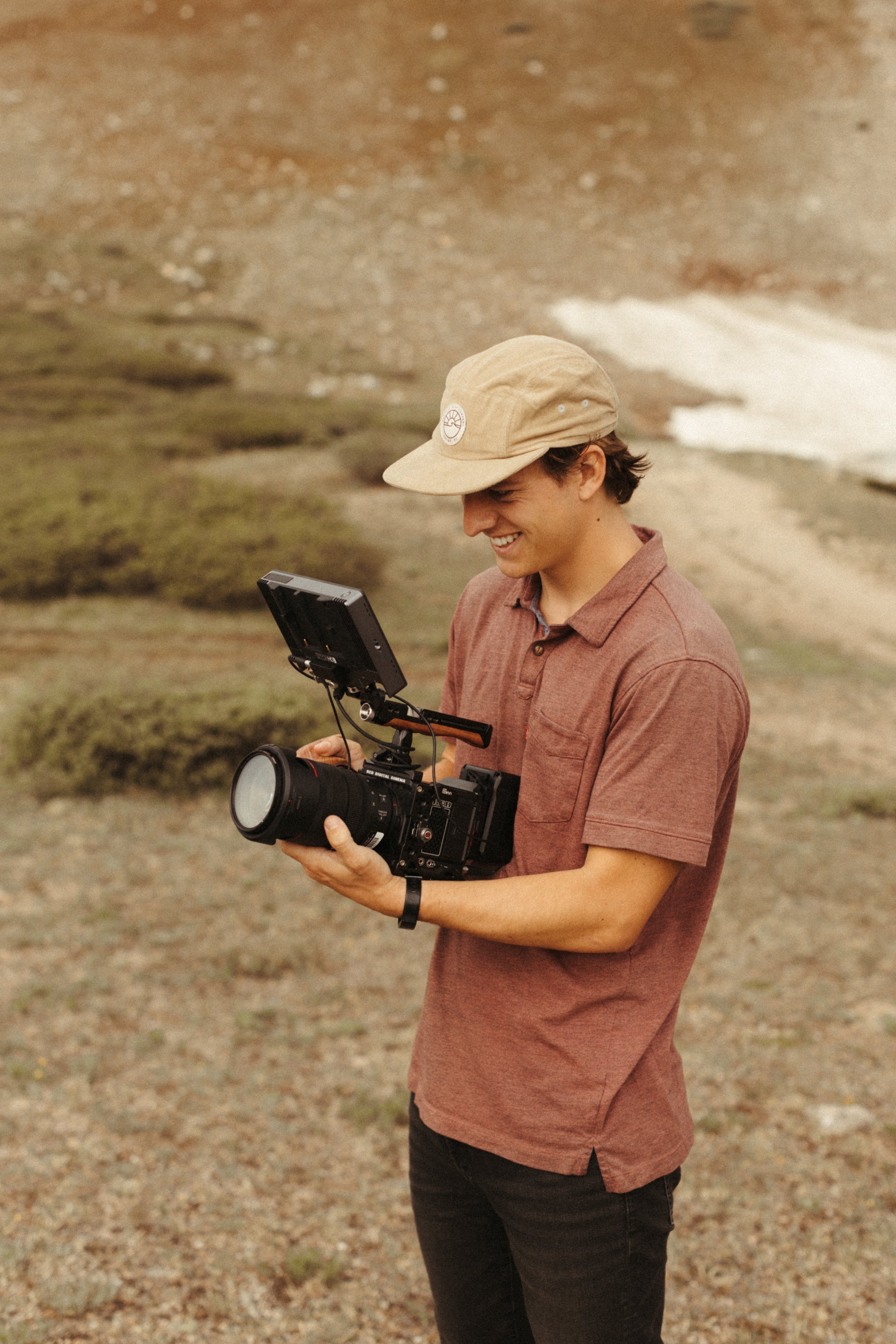Behind the Scenes - The Mexico Story
Last month I was a part of an adventurous rock climbing expedition for a week in El Potrero Chico, Mexico. We were hired by XtraTuf, a boot company, to create a short documentary film about pushing our limits and attempting the hardest rock climb we’ve ever done. Well, mostly it was about Noah and Jaidon doing the hardest climb they’ve ever done, but my job was to document it - which also very much pushed my limits.
I felt like a filmmaker, not a rock climber…
Despite what you may think, I don’t really identify as a rock climber (although I think I do more now after this trip) so I was operating in mostly new terrain on this project. That may be surprising to some people that have seen me climb on various trips that I’ve done or may have even seen two short rock climbing films in which I was the director, producer, or cinematographer. Still, it’s the truth - I felt like a filmmaker, not a rock climber.
Maybe it’s because I live in Boulder, Colorado in which everybody seems to be in elite level rock climber that I felt that I did not earn the title of being one because I couldn’t lead a 5.11 outside. I had spent a lot of time in the rock climbing gym before this expedition training to get to where I felt like I physically needed to be to carry out some of these shots on the wall and I am sooooooo happy I did. The final two days of the expedition, I had slept three hours each night despite trail running 17 miles with 6,000ft worth of elevation gain and climbing three pitches of 5.10 or above… all with drones and cameras in my backpack.
Still, despite all of the exhausting physical demands of the trip I’m so incredibly happy with how this trip turned out - both emotionally and cinematically. Traveling with great friends in search of an adventure, all while getting paid to take cameras along for the ride is kind of a dream come true so am looking forward to more opportunities like this in the future.
This project came when I got a text from Noah Kane who had just received an offer to bid for a climbing expedition project with XtraTuf and wanted me to join. Noah and I have worked together on a number of projects and what I love about working with him is the collaborative video production process that arises when we approach telling a story together.
I’m the cinematographer… amongst other things
We never fall into the traditional roles you may find in another video productions but Noah and I become a team tackling any and all stage of the process. I’ll put together the pitch deck, he’ll put together a pitch video. I may come up with an idea for a scene and he films it or he’ll hand me the drone to capture his wild and crazy idea. There’s no set director, cinematographer, location sound recordist, drone operator, or producer. We divide up the responsibilities and although that may not work for a lot of productions, it works well for our documentary projects in the field.
So, when the opportunity came for us to be working together on a rock climbing expedition in Mexico I obviously had to say yes…
You’ll get a pretty good idea of some of our antics when you watch the film but to give you context on what the video production looks like keep on reading…
Documentary Filmmaking Approach to Rock Climbing…
Our approach to creating “The Mexico Story” was basically just filming as much as we could. Noah had a rough story outline in his head - sharing the story of our time in Mexico - but there were no specific shots to get or moments to capture beforehand. We just knew we wanted to climb hard and have an adventure. Each night we would sit down and talk about what we wanted to do the next day and how filming would fit into that schedule.
For example, our third day in El Potrero Chico we knew we wanted to film a multi-pitch climb - for you non-climbers this basically just means getting high up on the wall by linking multiple climbs together. We had some wide angle lenses and felt that capturing a bit of the scale of this place was important. Did you forget that I did not consider myself a climber? Yeah, well I didn’t - so the the night before I was definitely pretty nervous. I had climbed one 5.11a in the gym before but the hardest I’ve ever climbed outside was a couple years ago when I was leading a 5.9. However, I ended up falling all the way to ground because of a misplaced piece of gear and it resulted in a fall that broke both of my feet. So the idea of doing a six pitch 5.10c climb (The biggest multi pitch I’ve done before this was three pitches…) was a little bit nerve-racking. Plus, I had to do it all with a backpack full of cameras to document the whole journey.
Becoming a rock climbing filmmaker…
Thankfully I had done some physical training in the rock climbing gym at home in Boulder, Colorado before this trip and felt like I could conquer the six pitch climb. At the end of the day I was obviously wiped but proud to have finished the climb. For Noah and Jaidon this trip was about Time Wave Zero but for me, this trip was about pushing myself in my climbing filmmaking abilities. During our time in Mexico, I found myself climbing above Jaidon and Noah six pitches off the ground with my camera to document some special moments. I ascended up a rope just like you’ve seen Jimmy Chin do in the movie Free Solo, something I’d done before but not with the ease and confidence I felt this time around. Finally, I got a chance to fly a couple drones in some insanely windy conditions at dangerously low battery levels risking a few thousand dollars of equipment as I would land with 1% or 2% battery left in an attempt to nail the shot.
The Part of adventure Filmmaking that Nobody Talks About…
After our wild and crazy adventures we would head back to the house we were renting and I took on the role of managing all of the data. I love Noah and Jaidon dearly but they have a different sense of comfort when it comes to labeling and organizing footage that I simply would not allow. At the end of every day I took the SD cards from the Mavic Air 2s drone, the Blackmagic 4K, the Sony A7siii, the Sony A7iii, the Sony a6300, the GoPro, and the lavalier microphones. At the end of a long day climbing and filming the only thing you want to do is get into bed or sit on the couch with a pile of food but that unfortunately wasn’t my reality.
While the rest of the gang did get a chance to hang out then go to bed, I would often stay up for an extra hour or two making sure all the footage was organized. This was vitally important to the success of the video production since I didn’t want to accidentally delete anything from all the amazing moments we captured that day. This allowed us to have fresh SD cards in the morning and confidence knowing that things are backed up twice and not going anywhere.
How We Filmed The Biggest Rock Climbing Objective of the Trip…
This was logistically one of the most challenging projects to shoot in a single day. Time Wave Zero is a 23 pitch sport climb and was the main objective of the expedition. There was no option for me to hike to the top of the climb and repel down to film. Ascending up a rope alongside them for 23 pitches would be too much of an interference in their experience as well as just a major hassle. The route was so high that the drone couldn’t fly from the bottom to the top without reaching a height limit.
This meant we had to get a bit creative on how to tell the story.
Dedication to the process…
Since this was the main objective of the trip I wanted to make sure it was covered in the best way and I knew I was the only one capable of providing the coverage for it since the other two dudes involved in the video production process were in the middle of a fifteen hour rock climbing adventure. I decided that I would wake up at 1:55am and film their alarm going off at 2am. After their groggy faces inhaled some cereal we all walked to the base of Time Wave Zero which took a little over an hour. We got some quick portraits and they were off…
Since it was going to be pitch black for another four hours there wasn’t much for me to film so I returned to the Airbnb to get a couple hours of sleep before checking in on them again. Once again, I walked from our place to the base of the climb - this time with the drone. I got some footage of them on the wall about six or seven pitches above the ground shortly after the daybreak. I then returned to another part of the canyon where I met up with the other three members of our crew and did some climbing. I figured when you’re in one of the most iconic climbing areas in the world it’s worth taking some time to put the cameras away and appreciate how awesome it is out there too.
At 1pm I took a backpack with my camera, some water, a mango and drone to capture Noah and Jaidon topping out. This is where things went a little haywire on the video production end. We had brought walkie-talkies that we could use throughout the trip to communicate between me and the climbers on the wall but for some reason the trail that I was on summited a mountain that bordered the top of Time Wave Zero but it was too far away from Noah and Jaidon to pick up their signal. I was also too far away to see them anywhere on the wall.
Looking for Jaidon and Noah…
This meant two things…
I couldn’t hear them and I couldn’t see them.
I had no idea where they were and how close they were the top. When we arrived in Mexico we had two drones so figured we had enough battery to use a couple flights to film the route but unfortunately my drone brutally crashed and was totaled two days prior. Noah‘s drone had a tragic malfunction during the shipping process and his second battery never worked. So I had one drone battery to capture the most epic part of this whole trip.
A drone battery typically lasts about 20/25 minutes which sounds like a lot of time but once you fly the drone around a mountain to find a couple of 6ft humans somewhere along a 2,300 foot rock face that all looks the same, you start to realize you don’t have as much time as you think. I was on a knife edge ridgeline (as soon above) as close as I could safely get to them in hopes it gave me better signal but nothing was coming through.
Stressfully Flying the Drone…
I took three separate drone flights on this one battery.
Drone Flight #1
On the first flight I found Noah and Jaidon located a couple pitches from the top so I did the math and thought it would be about 20 to 30 minutes before they topped out. I was stoked that I had that mango in my bag so plopped under a tree and ate my tropical fruit.
Drone Flight #2
On the second flight I was sure would catch them topping out since I’d waited a reasonable amount of time. They still did not summit and I saw on my phone screen while I was flying the drone a small Jaidon waving me off indicating that I should come back later.
Drone Flight #3
On the final flight I piloted the drone back over to them with about 25% battery left giving me about five minutes to get there, film them and return safely. I had trail ran up the neighboring mountain with all of this equipment to catch them in time but as I was flying the drone back it started to go into the auto landing mode. This is a safety precaution many drones have because the idea from the drone manufacturers is that they land automatically instead of crashing from the sky and damaging the drone farther. A good idea in theory, not in this situation…
From where I flew the drone (on top of the other mountain), if it started to land it would just to slide down the mountain into a field of cactuses and cliff faces so I would never be able to rescue it again. As I’m flying the drone back after successfully capturing them summiting Time Wave Zero (!) I get a warning that the drone is going into auto-land mode. I try to navigate the drone back up to me as I trail run down the mountain (while flying) and try to catch the drone as its auto descending.
With 1% left on the battery and loud beeping noises coming from both the controller and drone warning me that I should not have been trying to fly with this much battery left, I caught the drone. I reviewed the footage on my phone and discovered I got the shot. Because of what I captured and the footage that Noah and Jaidon got along the wall on their phones and small Sony camera, I knew we had what we needed. Time Wave Zero was successfully climbed and we had successfully filmed it.
So, to conclude, we had a pretty wild trip…
If you’re wondering what’s next from Noah, Jaidon and I - we have some projects in the works so the fun is far from over! We’re planning to create lots more videos in the future including, but definitely not limited to - deep water soloing in Arizona, canoe trips in northeastern Canada, 24 hours spent on a rock wall, etc. etc.
In case you missed our inaugural trip together, we created a documentary about the musical genre of Bomba in Puerto Rico a couple of years ago. The documentary isn’t completed yet but Noah made this fun little YouTube video to showcase some of the rock climbing adventures we had while we were filming in Puerto Rico as well. Hope you enjoy!
Chat with us!
Roo is a commercial/documentary filmmaker and photographer based in Boulder, Colorado but travels all around the world for his filmmaking career. He has produced films for Outside Magazine in Ireland, camera operated for Netflix in the Rocky Mountain West, photographed among indigenous communities in Peru and Ecuador, directed videos with professional climbers in Mexico and has received notable recognition in his hometown of Orcas Island in Washington State for his work telling uplifting stories in the outdoor space.
If you have questions or want to talk more about my life as a Boulder cinematographer or adventure filmmaker please reach out! I always love connecting with new people and talking through how I can help them achieve their dreams in telling stories of impact.














